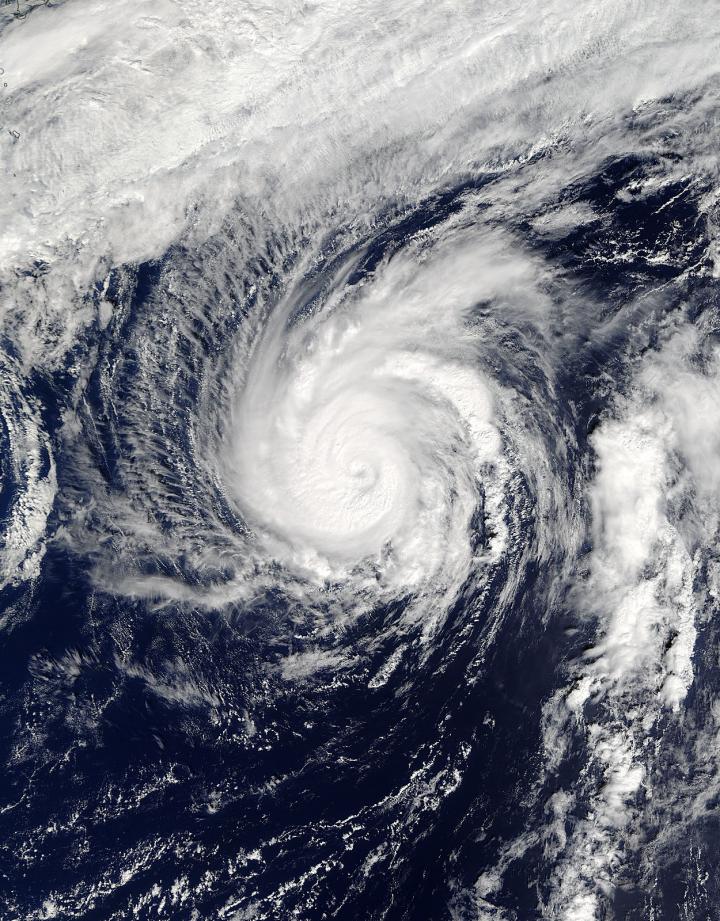NASA apots Typhoon Songda's cloud-filled eye

On Oct. 10 at 8:45 p.m. EDT (Oct. 11 at 00:45 UTC) NASA's Terra satellite saw powerful thunderstorms circling Typhoon Songda's cloud-filled eye. Stronger storms appeared a brighter white than those storms surrounding the center. Credits: NASA Goddard MODIS Rapid Response Team
Tropical storm Songda, the twenty-third tropical cyclone of the northwestern Pacific Ocean formed on Oct. 9. At 5 a.m. EDT (0900 UTC) Songda was located about 488 miles east-southeast of Iwo To island, Japan.
On Oct. 10 at 8:45 p.m. EDT (Oct. 11 at 00:45 UTC) The Moderate Resolution Imaging= Spectroradiometer or MODIS instrument aboard NASA's Terra satellite captured a visible-light image of Songda. MODIS saw powerful thunderstorms circling Typhoon Songda's 20 nautical mile wide, cloud-filled eye. Stronger storms appeared a brighter white than those storms surrounding the center.
On Oct. 11 at 11 a.m. EDT (1500 UTC) Typhoon Songda's maximum sustained winds were near 100 knots (115.1 mph/185.2 kph).
Hurricane-force winds were occurring up to 30 miles from the center, while tropical storm force winds extended just 90 miles. Sondga is a compact storm.
It was located far from land areas and about 538 nautical miles southeast of Yokosaka, Japan near 29.3 degrees north latitude and 147.6 degrees east longitude. Songda was moving to the northeast at (11.5 mph/18.5 kph).
The Joint Typhoon Warning Center forecast noted increasing vertical wind shear and cooling sea surface temperatures will rapidly erode the system. Songda is forecast to begin weakening and become extra-tropical over the next two days.
Media Contact
All latest news from the category: Earth Sciences
Earth Sciences (also referred to as Geosciences), which deals with basic issues surrounding our planet, plays a vital role in the area of energy and raw materials supply.
Earth Sciences comprises subjects such as geology, geography, geological informatics, paleontology, mineralogy, petrography, crystallography, geophysics, geodesy, glaciology, cartography, photogrammetry, meteorology and seismology, early-warning systems, earthquake research and polar research.
Newest articles

High-energy-density aqueous battery based on halogen multi-electron transfer
Traditional non-aqueous lithium-ion batteries have a high energy density, but their safety is compromised due to the flammable organic electrolytes they utilize. Aqueous batteries use water as the solvent for…

First-ever combined heart pump and pig kidney transplant
…gives new hope to patient with terminal illness. Surgeons at NYU Langone Health performed the first-ever combined mechanical heart pump and gene-edited pig kidney transplant surgery in a 54-year-old woman…

Biophysics: Testing how well biomarkers work
LMU researchers have developed a method to determine how reliably target proteins can be labeled using super-resolution fluorescence microscopy. Modern microscopy techniques make it possible to examine the inner workings…





















